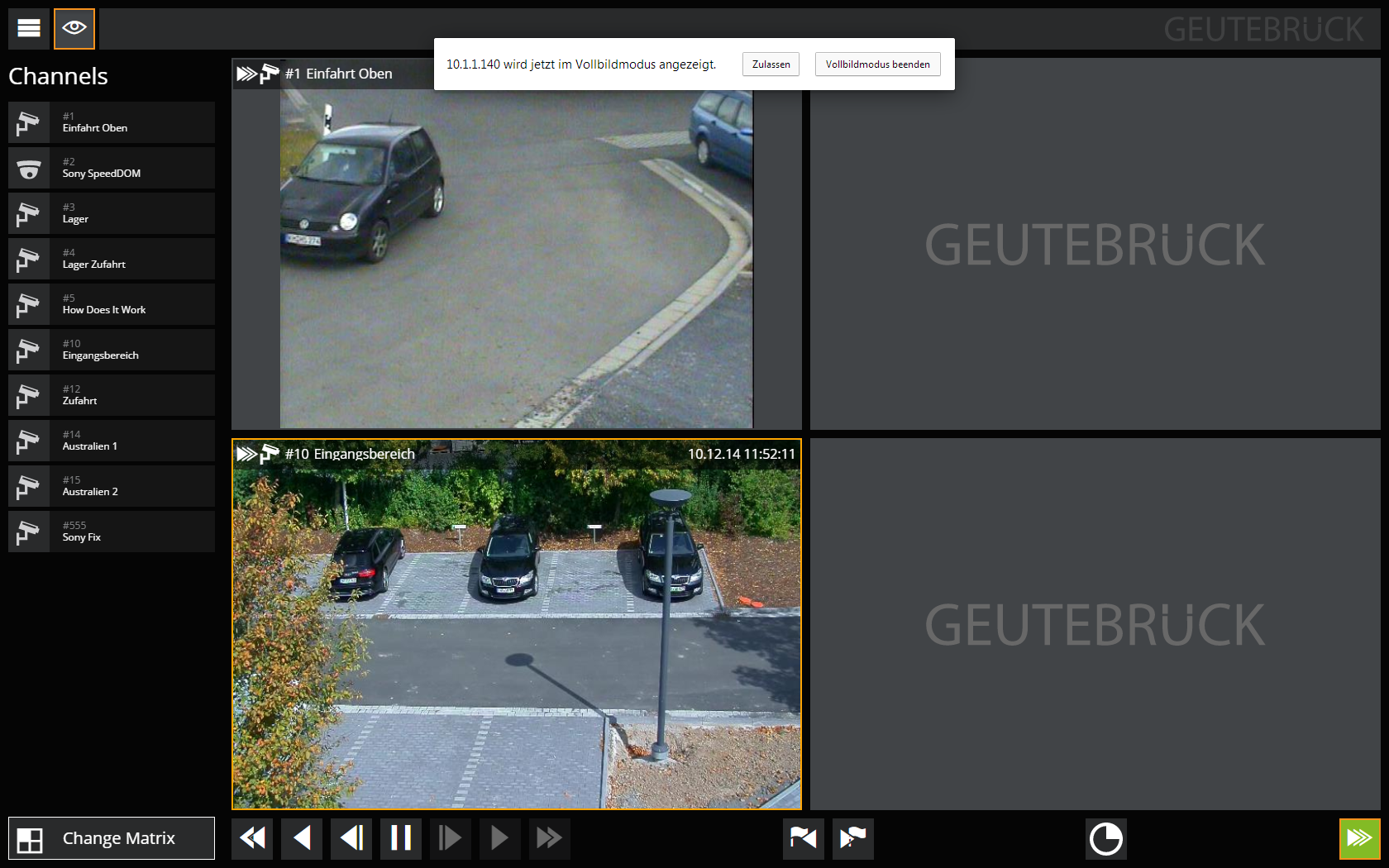Operation and Settings
Operation
With respect to the control bar and other controls, operation is similar to G-View and is self-explanatory.
The images are activated on the viewer by dragging and dropping, either using a finger on tablets and smartphones or with a mouse on the desktop. The following table lists other operating options:
|
|
Tablet and smartphone |
Desktop with the mouse |
|---|---|---|
|
|
Single tap to operate the buttons |
Click on the buttons with the left mouse button |
|
|
Zooming the image in the viewer (the image can be positioned by swiping) |
Zooming with mouse wheel (position image with the left mouse button pressed) |
|
|
Double tap to switch to the viewer full screen mode* |
Double click with the left mouse button* |
|
|
Swipe in all directions for PTZ control (otherwise, digital zoom is controlled) |
Like digital zoom in G-View |
*If a PTZ camera is in the viewer, the controls in the right sidebar will appear.
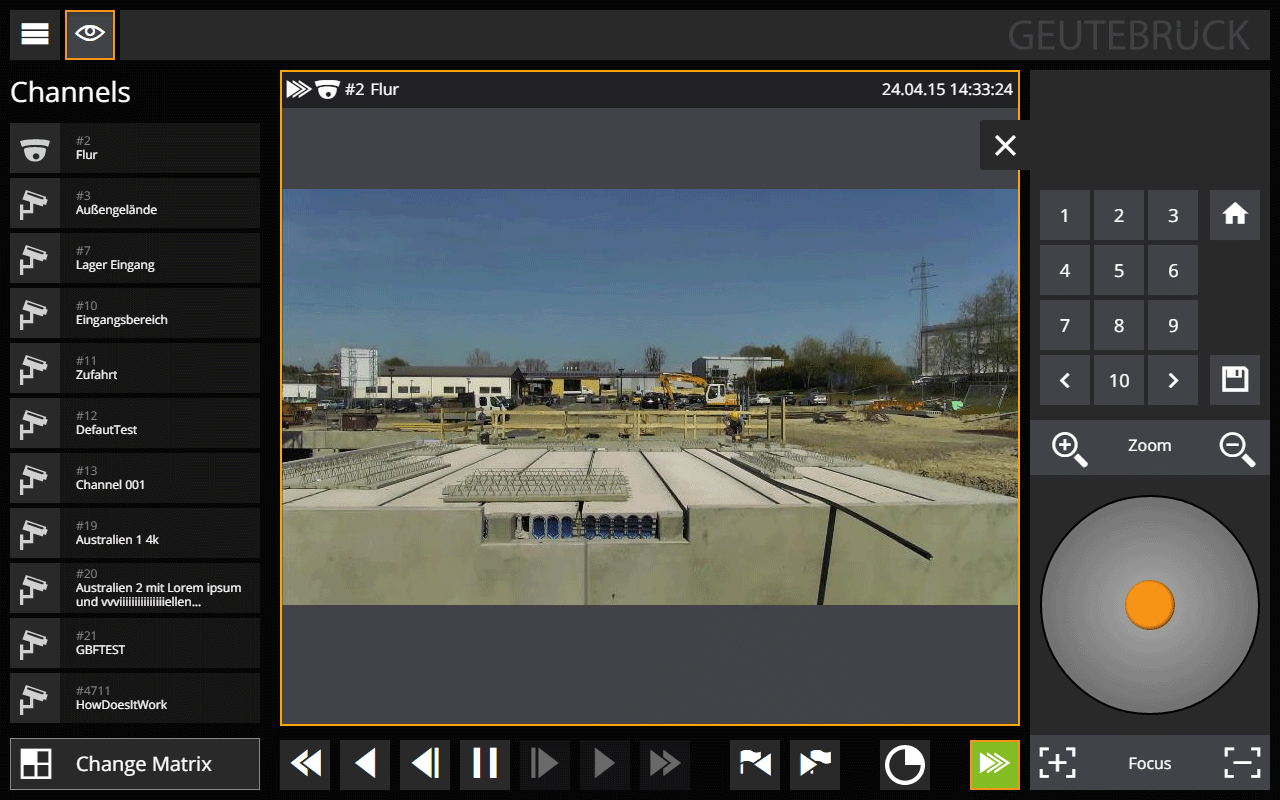
Using automatic, device-specific scaling, the viewer always only shows the resolution that the device is able to physically display. When changing to the viewer full-screen mode (and thus to a larger display area), the transmitted image resolution is dynamically adapted/enlarged.
IMPORTANT: The user should log off because the maximum number of logged-in users or sessions is limited.
Locking the screen or pressing the Home button will not log you out!
Handling of PTZ channels with blocked PTZ control (blocked telecontrol)
In G-Set it is possible to block PTZ control for a user (Telecontrol -> User configuration -> Block tab). Starting from version 2.0 of G-Web, when blocked the PTZ camera is shown to the user as a “normal” camera and no control bar is shown for the PTZ control when the viewer is switched to full screen mode.
Settings
![]() The setting menu that is opened by a click or tap on the icon contains a number of settings:
The setting menu that is opened by a click or tap on the icon contains a number of settings:
|
Icon |
Description |
|---|---|
|
Channels |
Show channel list |
|
Settings |
Opens the dialog for device-specific settings |
|
Help |
Opens the G-Web help |
|
Logout |
Exit |
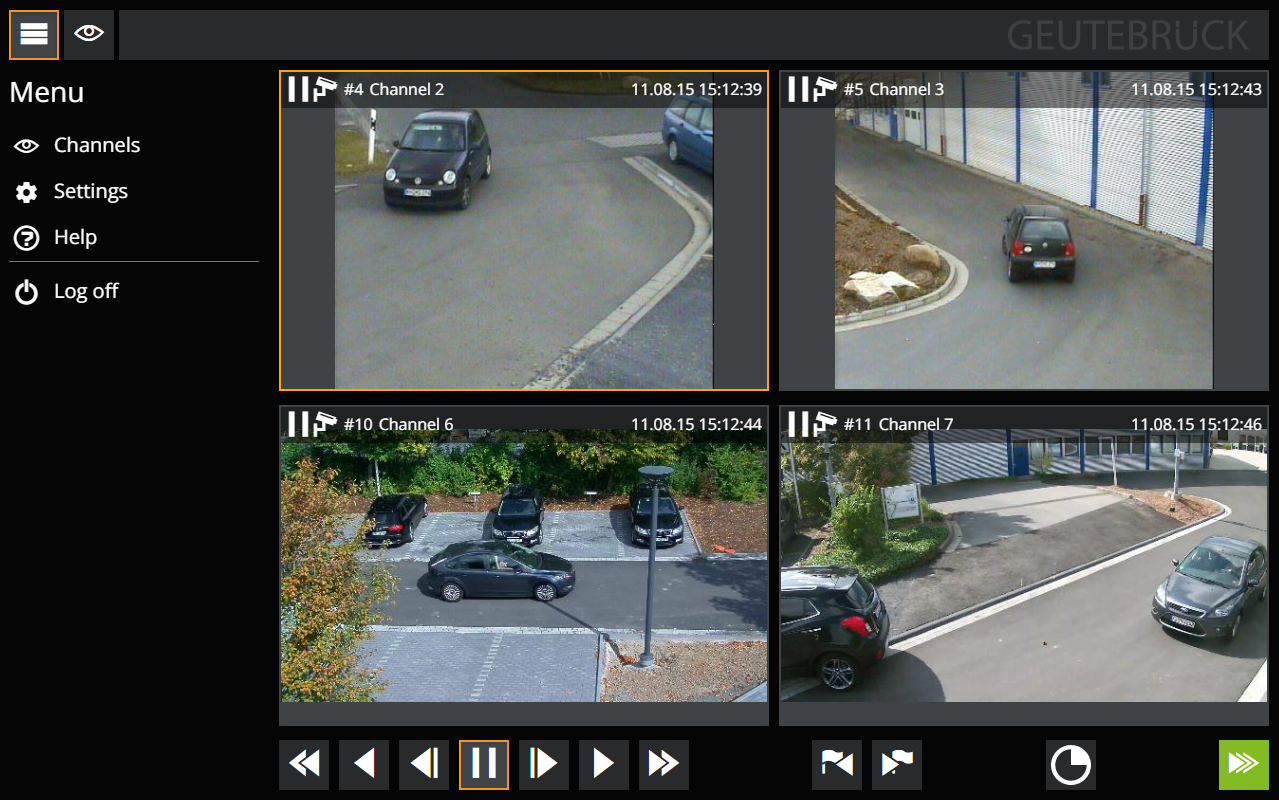
Clicking on Channels opens the familiar media channel list.
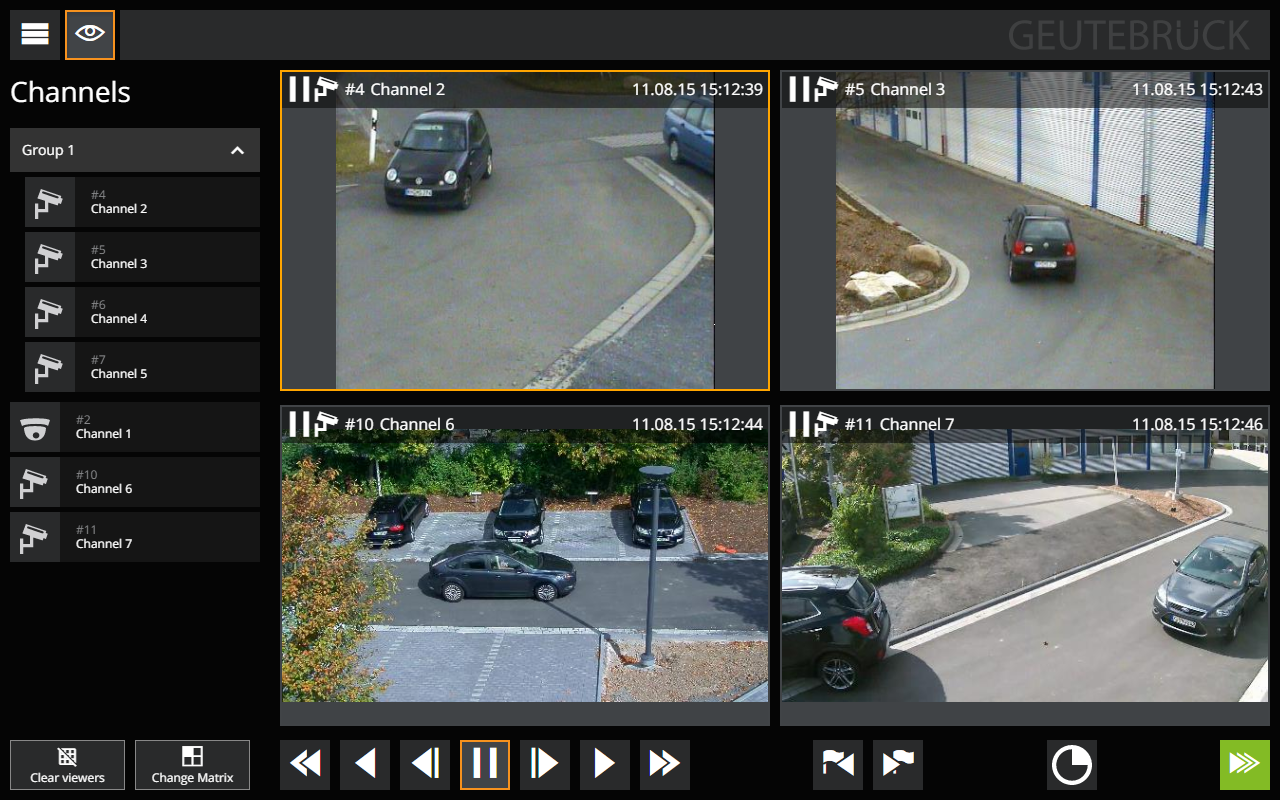
Camera Groups: G-Web takes into account media groups (since version 1.3). Clicking on the group name shows or hides the channels of the group
Settings
Clicking on Settings opens the configuration dialog:
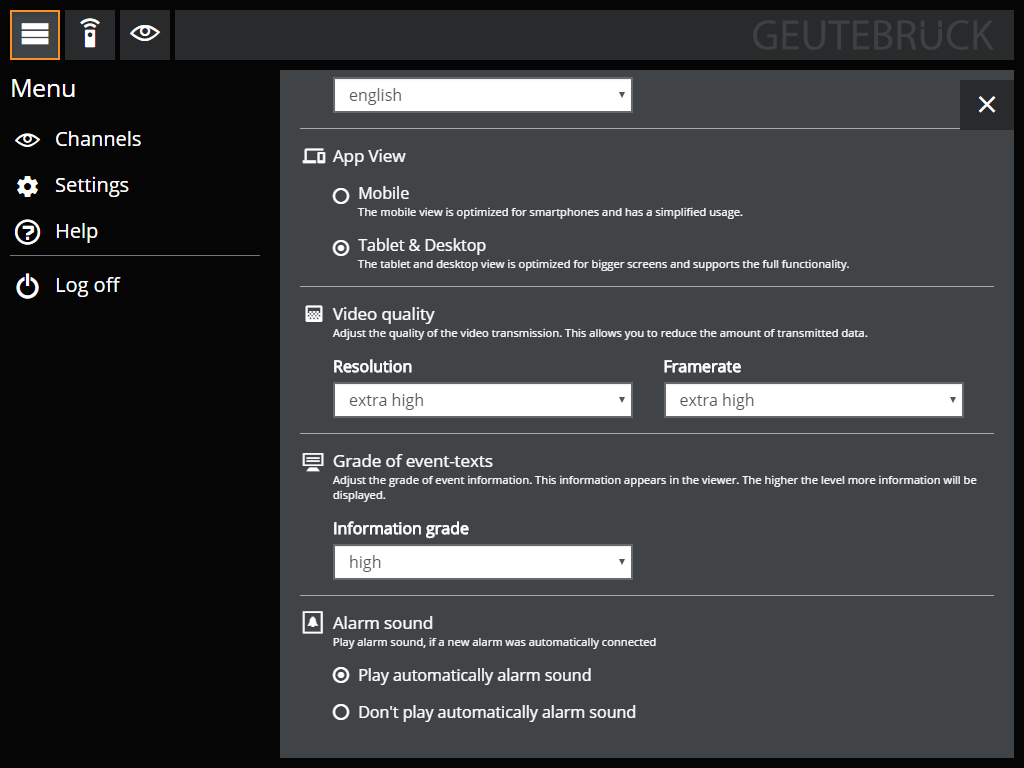
The following applies as a general rule: The settings made here relate solely to the current device. They are directly accepted with no further actions necessary. In addition, the settings are retained if cookies are allowed, and so long as the cookies are not deleted.
Language
Using the Language menu, you can switch between 4 languages, which are activated immediately without restarting app. Currently the languages English, German, French and Spanish are supported.
If the language is changed, this setting is used again for the next start.
App View
Under App View you can select between Mobile and Tablet & Desktop. Mobile mode is used when G-Web is opened on a smartphone. Mobile mode can be activated anytime on other devices or be activated or disabled on the smartphone.
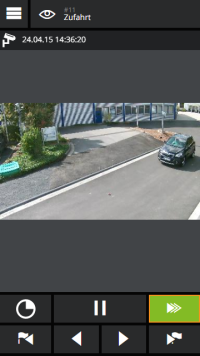
|
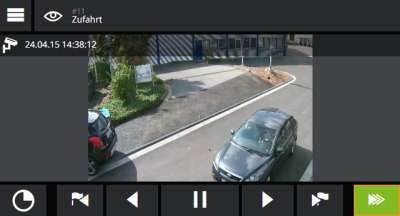
|
When using mobile devices, you must first create a shortcut on the desktop. When G-Web is started using this link, it will switch to full-screen mode.
Video Quality
This setting can be used to influence the resolution and frame rate of the stream. The setting applies to all streams of this device equally.
Resolution: The resolution in G-Web is automatically determined based on the device resolution, viewer size and if necessary digital zoom and adapted during operation. The Resolution parameter can be used to influence this mechanism by reducing all determined resolution values by a specific percentage. This corresponds to the same percentage reduction in the amount of data to be transferred (based on the amount of data that would be transferred if the resolution were not reduced).
The levels correspond to: very low: 10%, low: 25%, medium: 50%, high: 75%, very high: 100%.
Refresh rate: Adjusting the refresh rate is equivalent to a limitation of the number of transferred images per second for each stream. The levels correspond to: very low: ≤1 fps, low: ≤5 fps, medium: ≤13 fps, high: ≤20 fps, very high: ≤30 fps
The next smallest possible frame rate that can be generated is used for the transmission. The highest setting also reduces the frame rate to 30 fps, as more is not useful for viewing a stream.
Information Grade
A range of information is displayed in the viewer. The level of detail of the event parameters can be modified here. The available choices are: none, low, medium, high.
Alarm Sound
When a new alarm occurs, a sound is played automatically. If this should not happen, playback can be turned off here.
Playback of the alarm sound is not possible on mobile devices. For this reason, the corresponding operating options and settings are not shown on these devices.
Customizable Buttons
In G-Web buttons can be set up that can be used to trigger a G-Core action. More information can be found in the section G-Web/Setup.
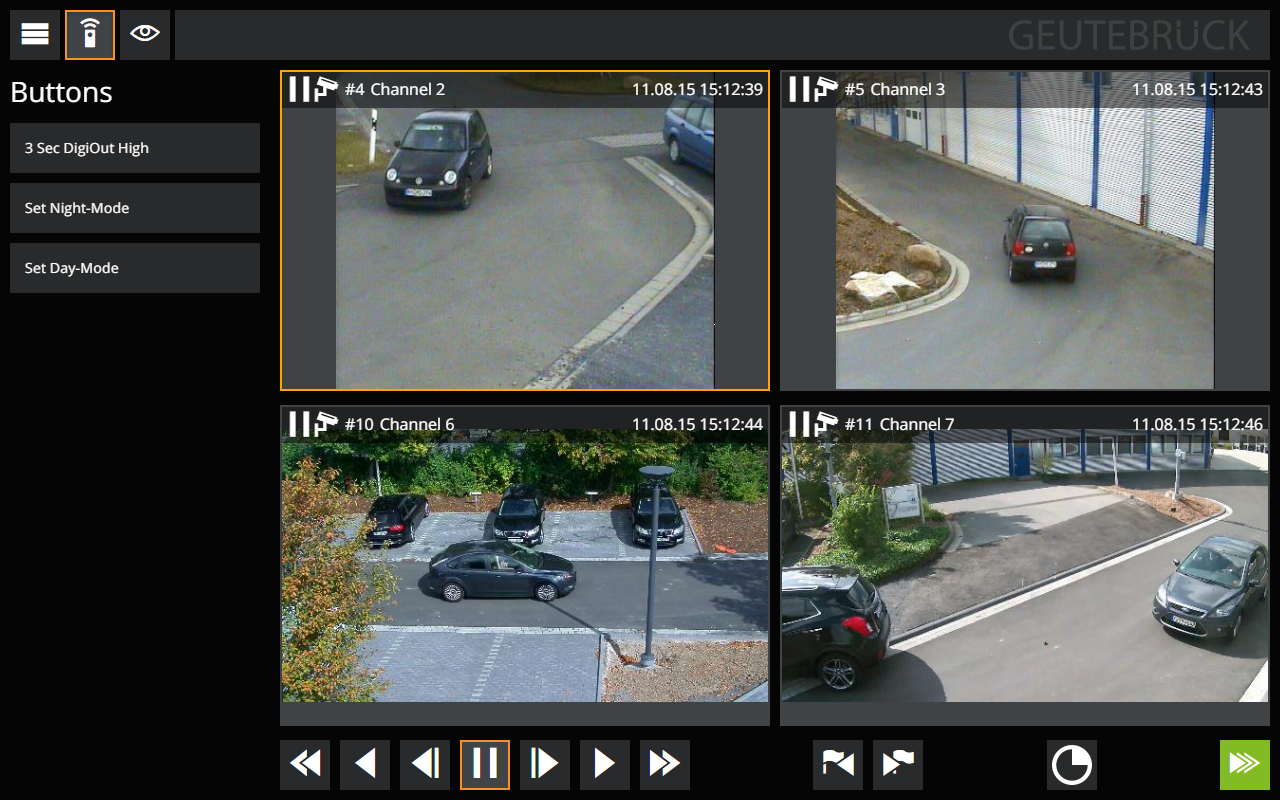
Full-Screen Node
Clicking on the Geutebrück logo switches G-Web to full-screen mode in the desktop version. Please note that this mode does not run reliably in all browsers.
When using mobile devices, you must first create a shortcut on the desktop. When G-Web is started using this link, it will switch to full-screen mode.
